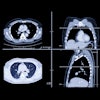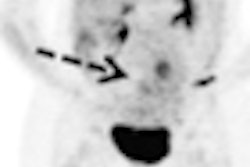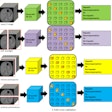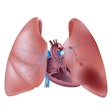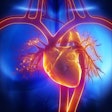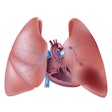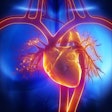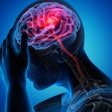CHICAGO - Pregnant women underwent an increasing number of radiologic examinations during the past 10 years -- even though the number of deliveries increased only modestly, according to a new study presented Tuesday at the RSNA 2007 meeting.
Researchers from the Warren Alpert School of Medicine at Brown University in Providence, RI, conducted a retrospective review of nuclear medicine, computed tomography (CT), and plain-film x-ray exams at Brown University hospitals from 1997 to 2006. They were able to conduct the study because hospital procedures accurately tallied the radiation exposure to the fetus and the mother.
Based on the data, the researchers determined the following:
- 5,235 radiology procedures were performed on 3,249 pregnant patients.
- The number of patients having an examination increased by 94%.
- The number of examinations increased by 125%.
- The number of deliveries increased 7%.
- The utilization rate, the number of examinations divided by the patient population, increased 81%.
"The greatest increases were in the number of computed tomography (CT) examinations," said Dr. Elizabeth Lazarus, an assistant professor of diagnostic imaging.
While CT is not routinely used during pregnancy, Lazarus noted that pregnant women may undergo CT to detect suspected life-threatening conditions, such as bleeding in the brain, blood clots in the lungs, or appendicitis.
For example, she noted that CT angiography became the most frequently used CT procedure by 2004, whereas it was not used at all before 2000.
The researchers did not analyze the outcomes of the extra use of radiological exams -- that is, whether the tests improves outcomes for both mother and child. "That type of information was beyond the scope of our study," Lazarus said.
They also did not review the use of MRI studies or ultrasound exams since those imaging modalities do not increase radiation risk to the mother or the fetus, she explained.
"This patient population is vulnerable to adverse effects by increased radiation," Lazarus said. "Potential fetal risks include central nervous system defects, increased incidence of childhood leukemia, and other malignancies. There is also a risk to the mother of carcinogenesis associated with breast radiation."
The average estimated fetal radiation exposure for CT was 0.69 rads (range 0.001 to 66.6), versus 0.0015 rads (range 0.001 to 2.25) for plain film and 0.040 rads (range 0.001 to 0.77) for nuclear medicine studies. The allowable radiation threshold during pregnancy is 50 mGy, "so even abdominal studies were well within allowable bounds," Lazarus said.
However, the cumulative effect of radiation is less clear, and some women had more than one scan or repeat scans with each pregnancy.
Dr. Philip Alderson, the Jonas Picker Professor and chairman of radiology at Columbia University in New York City, said the increase in imaging studies "reflects an increase in referrals."
"Often a radiologist will tell a referring physician that a test may not be necessary, only to have the referring physician say, 'I know my patient and I know she needs this study,' " Dr. Alderson said.
But Dr. Deborah Levine, an associate professor of radiology at Harvard Medical School in Boston, said the American College of Radiology (ACR) has issued criteria for the use of imaging studies during pregnancy. Those recommendations, she said, emphasize the need to preferentially use nonionizing techniques such as ultrasound, resorting to plain x-ray and CT only when absolutely necessary.
Radiologists can use those criteria to educate referring physicians about appropriate use of CT in pregnant women, Levine said. Moreover, she said that all patients sign informed consents before undergoing imaging studies. The consent forms used with pregnant women detail the potential risks to both the mother and the fetus, she said.
By Edward Susman
AuntMinnie.com contributing writer
November 28, 2007
Related Reading
Low-dose CT yields equivalent value for PE in pregnancy, November 27, 2007
MR shows broad spectrum of findings in pregnant women with suspected appendicitis, July 3, 2007
Routine use of diagnostic CT not advised for suspected appendicitis, May 24, 2007
MDCT of pregnant patient, August 4, 2006
Data, not fear, should drive CT decisions in pregnancy, July 10, 2006
Copyright © 2007 AuntMinnie.com
